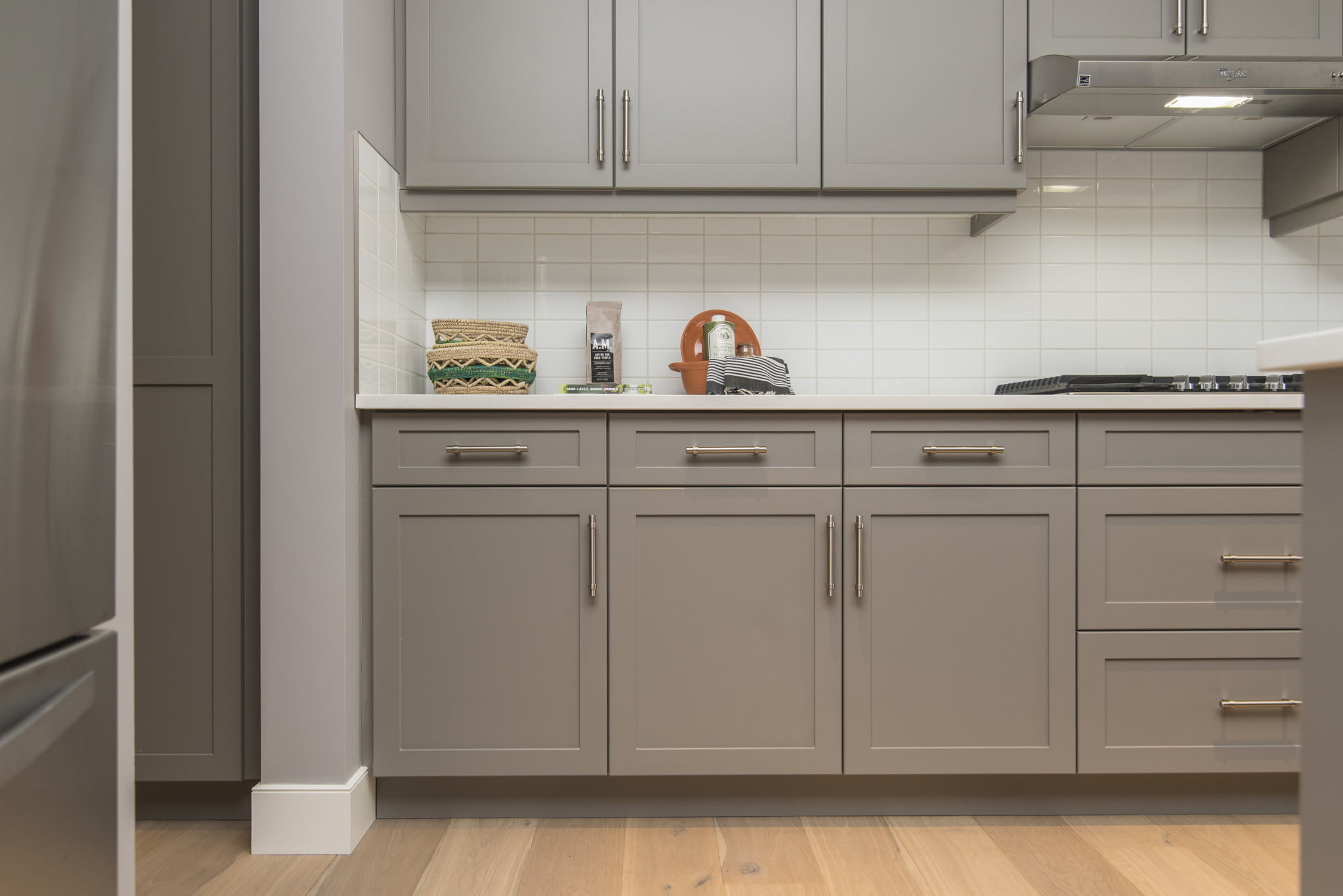Understanding Your Kitchen Style and Needs

Choosing the right kitchen cabinet handles is an essential part of creating a cohesive and functional kitchen space. Your kitchen style and needs will play a significant role in guiding your handle selection.
Kitchen Styles and Handle Choices
Your kitchen style sets the tone for the overall design and influences the choice of handles. Different styles call for specific handle designs to complement the aesthetics and functionality.
- Traditional Kitchens: These kitchens often feature ornate details, warm color palettes, and classic designs. Cabinet handles in traditional kitchens typically embrace intricate details, such as knobs with decorative elements, pulls with elegant curves, or ornate finishes like polished brass or oil-rubbed bronze. These handles add a touch of sophistication and enhance the classic charm of the kitchen.
- Modern Kitchens: Modern kitchens prioritize clean lines, minimalist designs, and sleek finishes. Cabinet handles in modern kitchens often feature simple geometric shapes, sleek lines, and contemporary materials like stainless steel, chrome, or matte black. They aim to create a streamlined and uncluttered aesthetic.
- Contemporary Kitchens: Contemporary kitchens blend modern elements with a touch of warmth and personality. They often incorporate natural materials like wood, stone, or metal. Cabinet handles in contemporary kitchens can range from minimalist designs to slightly more intricate styles, reflecting a balance between modern aesthetics and a touch of traditional charm.
- Transitional Kitchens: Transitional kitchens bridge the gap between traditional and modern styles. They often feature a mix of classic elements with modern touches. Cabinet handles in transitional kitchens offer a versatile range of options, allowing for a balance between traditional and modern aesthetics.
- Rustic Kitchens: Rustic kitchens embrace natural elements, warm textures, and a sense of cozy charm. Cabinet handles in rustic kitchens often feature distressed finishes, rustic materials like wood or iron, or designs inspired by nature.
The Importance of Overall Kitchen Design
Beyond the kitchen style, it’s crucial to consider the overall design elements of your kitchen. This includes factors like countertop materials, backsplash patterns, cabinet finishes, and appliances.
- Countertop Materials: The countertop material can influence the handle choice. For example, granite countertops with a bold pattern might call for simpler handles to avoid visual clutter, while a sleek quartz countertop might complement more intricate handle designs.
- Backsplash Patterns: The backsplash design can also play a role. A busy backsplash might require simpler handles to maintain a balanced look, while a plain backsplash might allow for more intricate handle designs.
- Cabinet Finishes: The cabinet finish can influence the handle choice. For example, dark wood cabinets might benefit from lighter-colored handles to provide contrast, while white cabinets might complement handles in any color.
- Appliance Finishes: The finish of your appliances can also impact the handle choice. For example, stainless steel appliances might pair well with chrome or brushed nickel handles, while black appliances might complement matte black or bronze handles.
Identifying the Right Handle Style for Different Kitchen Layouts and Functionality
The layout and functionality of your kitchen can also influence the choice of handles.
- Small Kitchens: In small kitchens, it’s essential to maximize space and minimize clutter. Opt for smaller, minimalist handles that won’t obstruct movement or create a cramped feeling.
- Large Kitchens: In large kitchens, you have more flexibility with handle styles. Consider incorporating larger, statement-making handles that can add a touch of personality and visual interest.
- Island Kitchens: Islands often feature multiple cabinets with varying functions. Choose handles that complement the overall design while considering the specific function of each cabinet. For example, a cabinet for storing pots and pans might benefit from larger, sturdy handles, while a cabinet for displaying dishes might feature more decorative handles.
Types of Cabinet Handles: Pick The Right Kitchen Cabinet Handles

Choosing the right cabinet handles can significantly impact the overall look and feel of your kitchen. They add a touch of personality and functionality, enhancing the aesthetics and usability of your space. Understanding the different types of handles available can help you make an informed decision that aligns with your style and needs.
Types of Cabinet Handles, Pick the right kitchen cabinet handles
The most common types of cabinet handles are knobs, pulls, bar pulls, and cup pulls. Each type offers unique advantages and disadvantages, influencing their suitability for different kitchen styles and preferences.
| Type | Description | Advantages | Disadvantages |
|---|---|---|---|
| Knobs | Small, round or square handles that are typically mounted on the center of the cabinet door. |
|
|
| Pulls | Handles that extend out from the cabinet door, allowing for a more comfortable grip. |
|
|
| Bar Pulls | Long, rectangular handles that are typically mounted horizontally across the cabinet door. |
|
|
| Cup Pulls | Handles that resemble a cup or bowl, often featuring a recessed area for the fingers to grip. |
|
|
Materials for Cabinet Handles
The material used for cabinet handles significantly impacts their style, durability, and price. Common materials include metal, wood, and ceramic, each offering distinct advantages and disadvantages.
Metal Handles
Metal handles are the most popular choice for cabinet hardware due to their durability, versatility, and wide range of styles.
“Metal handles are a popular choice due to their durability and versatility, offering a wide range of styles and finishes to complement any kitchen design.”
- Stainless steel: Known for its durability, resistance to rust, and modern aesthetic. It is a popular choice for contemporary kitchens.
- Brass: Offers a classic and elegant look, often with a warm, golden finish. It can be polished or left with a natural patina for a vintage feel.
- Nickel: Provides a sleek and sophisticated look, often with a satin or brushed finish. It complements both traditional and modern kitchen styles.
- Copper: Adds a touch of warmth and character to the kitchen, often with a rustic or industrial feel. It can develop a unique patina over time.
Wood Handles
Wood handles offer a natural and warm aesthetic, adding a touch of rustic charm to the kitchen.
“Wood handles offer a natural and warm aesthetic, adding a touch of rustic charm to the kitchen. They are often made from hardwoods like maple, oak, or walnut, providing durability and a unique character.”
- Maple: A durable and light-colored wood, often used for traditional kitchens. It can be stained or painted to match the surrounding cabinetry.
- Oak: A strong and sturdy wood with a distinctive grain pattern. It is a popular choice for rustic and farmhouse kitchens.
- Walnut: A rich and dark wood with a beautiful grain pattern. It adds a touch of elegance and sophistication to the kitchen.
Ceramic Handles
Ceramic handles are a less common choice for cabinet hardware, but they offer a unique and decorative touch to the kitchen.
“Ceramic handles are a less common choice for cabinet hardware, but they offer a unique and decorative touch to the kitchen. They are often hand-painted or glazed, adding a touch of artistry and personality to the space.”
- Hand-painted: Offer a unique and personalized look, often featuring intricate designs or patterns. They can be a focal point in the kitchen.
- Glazed: Provide a smooth and durable finish, often with a glossy or matte look. They can be found in various colors and patterns to complement different kitchen styles.
Factors to Consider When Choosing Cabinet Handles

Choosing the right cabinet handles is crucial for both functionality and aesthetics in your kitchen. The handles you select can significantly impact the overall look and feel of your space, and they should complement your kitchen’s style and design. To ensure you make the best choice, consider these key factors.
Handle Size and Usability
The size of your cabinet handles directly affects their usability and visual impact. Larger handles are easier to grip and open, making them ideal for cabinets used frequently. However, they can appear bulky on smaller cabinets or in a minimalist kitchen. Smaller handles are more subtle and can create a cleaner, streamlined look. They are a good choice for smaller cabinets or kitchens with a modern aesthetic.
- Consider the size of your cabinets: Larger handles are more appropriate for larger cabinets, while smaller handles are better suited for smaller cabinets.
- Think about the frequency of use: Handles that are used frequently should be easier to grip, suggesting larger handles.
- Evaluate the overall style of your kitchen: Handles should complement the existing style of your kitchen. For example, larger, more ornate handles may be more suitable for a traditional kitchen, while sleek, minimalist handles might be better for a modern kitchen.
Matching Handle Finish to Other Kitchen Fixtures
The finish of your cabinet handles should complement the other fixtures in your kitchen, such as faucets, appliances, and lighting. Maintaining a consistent finish creates a cohesive and polished look.
- Consider the existing finishes in your kitchen: If you have brushed nickel faucets, consider using brushed nickel handles.
- Explore the use of contrasting finishes: If you have stainless steel appliances, consider using black handles to create a bold contrast.
- Choose finishes that are easy to clean and maintain: Polished finishes may look elegant but can show fingerprints and smudges more easily than brushed or matte finishes.
Handle Placement for Functionality and Aesthetics
The placement of your cabinet handles is essential for both functionality and aesthetics. Handles should be placed at a comfortable height for easy access, and they should be positioned in a way that complements the design of your cabinets.
- Consider the height of the cabinets: Handles should be placed at a height that is easy to reach for everyone in the household.
- Think about the design of your cabinets: Handles can be placed on the center of the cabinet door, offset to the side, or even on the bottom of the door.
- Experiment with different placement options: You can experiment with different handle placements before making a final decision.
Pick the right kitchen cabinet handles – Picking the right kitchen cabinet handles can be a fun but challenging process. You’ll want to consider the overall style of your kitchen, but also the practicalities of daily use. If you’re looking for inspiration, you might check out the history and evolution of the room and board medicine cabinet , which offers a glimpse into how hardware has been integrated into home design over the years.
Ultimately, the best kitchen cabinet handles are those that you find both aesthetically pleasing and easy to use, ensuring a functional and stylish space for years to come.
Choosing the right kitchen cabinet handles is an important detail that can elevate the overall look of your space. Just like how you might consider a partition cabinet living room to create a distinct yet cohesive area, the right handles can enhance the functionality and style of your kitchen.
Think about the overall design, the size of your cabinets, and the feel you want to achieve, and your kitchen will be a testament to your impeccable taste.
